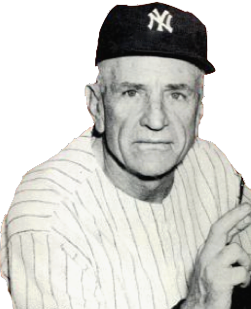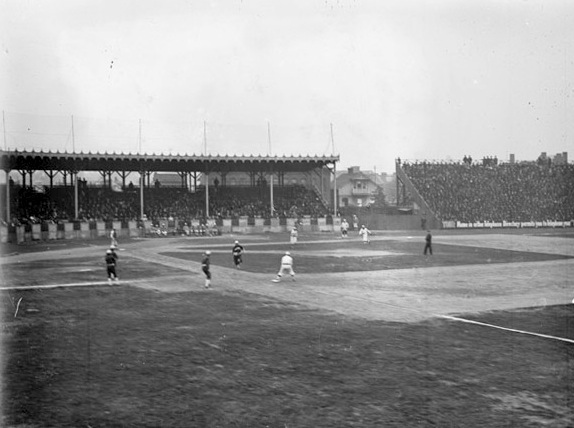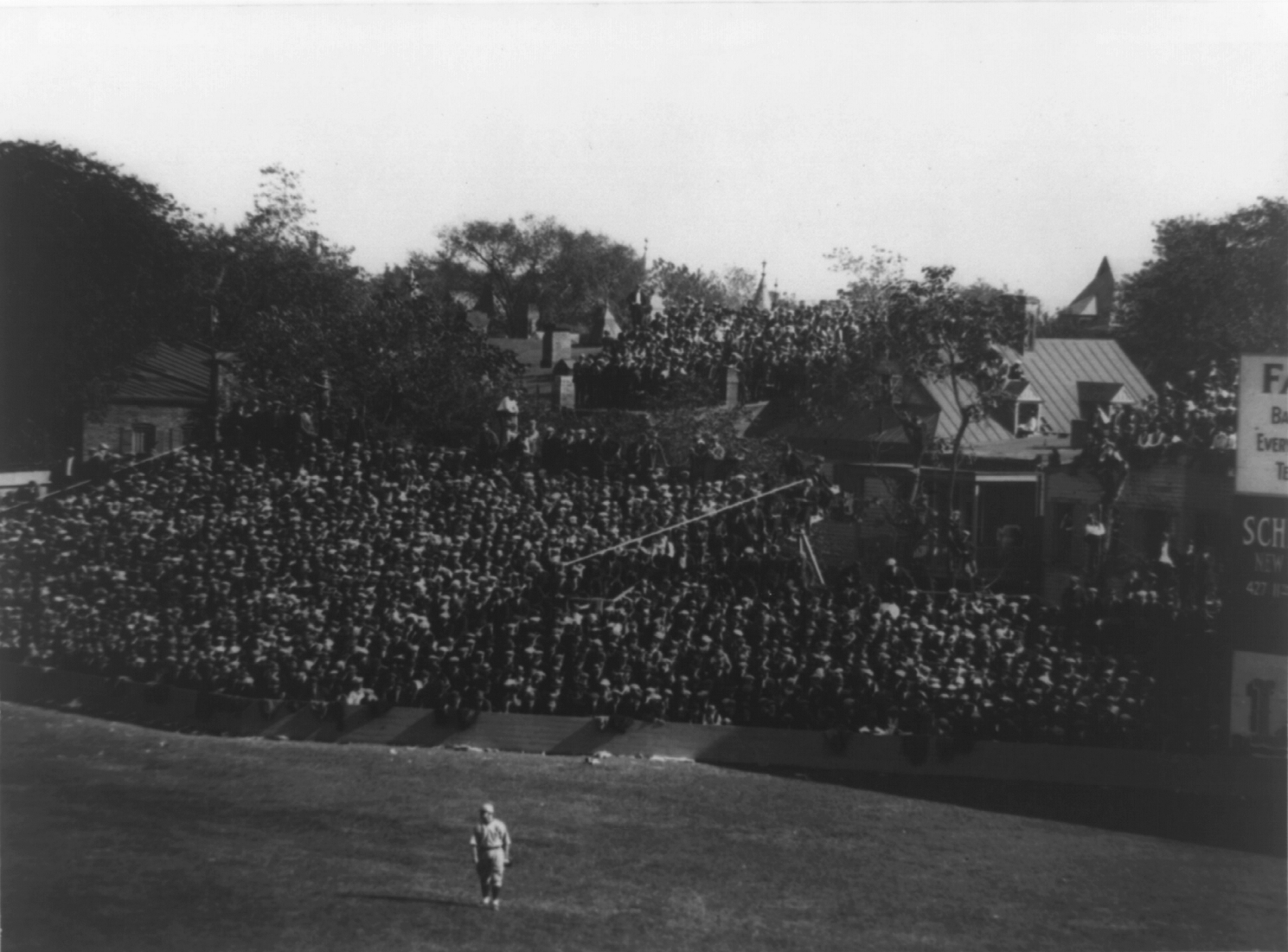|
Earl Weaver Baseball
Earl Weaver Baseball is a baseball video game (1987) designed by Don Daglow and Eddie Dombrower and published by Electronic Arts. The artificial intelligence for the computer manager was provided by Baseball Hall of Fame member Earl Weaver, then manager of the Baltimore Orioles. ''EWB'' was a major hit, and along with '' John Madden Football'' helped pave the way for the EA Sports brand, which launched in 1992. A Sega Genesis version was planned but cancelled. Daglow and Dombrower had previously teamed together to create '' Intellivision World Series Baseball'' at Mattel in 1983, the first video game to use multiple camera angles and the first console sports sim. Daglow and Dombrower interviewed Weaver in his hotel room in a series of meetings over a period of months during the 1985 season for managerial AI. Dombrower actually apologized to Weaver at one point for taking up so much of his free time, but Weaver told him that he never had anything to do during road trips and never ... [...More Info...] [...Related Items...] OR: [Wikipedia] [Google] [Baidu] |
Don Daglow
Don Daglow (born circa 1953) is an American video game designer, programmer, and producer. He is best known for being the creator of early games from several different genres, including pioneering simulation game ''Utopia'' for Intellivision in 1981, role-playing game ''Dungeon'' in 1975, sports games including the first interactive computer baseball game ''Baseball'' in 1971, and the first graphical MMORPG, ''Neverwinter Nights'' in 1991. He founded long-standing game developer Stormfront Studios in 1988. In 2008 Daglow was honored at the 59th Annual Technology & Engineering Emmy Awards for ''Neverwinter Nights'' pioneering role in MMORPG development. Along with John Carmack of id Software and Mike Morhaime of Blizzard Entertainment, Daglow is one of only three game developers to accept awards at both the Technology & Engineering Emmy Awards and at the Academy of Interactive Arts & Sciences Interactive Achievement Awards. In 2003 he was the recipient of the CGE Achiev ... [...More Info...] [...Related Items...] OR: [Wikipedia] [Google] [Baidu] |
Intellivision World Series Baseball
''Intellivision World Series Major League Baseball'' is a baseball video game (1983) designed by Don Daglow and Eddie Dombrower, and published by Mattel for the Intellivision Entertainment Computer System. ''IWSB'' was one of the first sports video games to use multiple camera angles and present a three-dimensional (as opposed to two-dimensional) perspective. It was also the first statistics-based baseball simulation game on a video game console; all prior console baseball games were arcade-style recreations of the sport. The game's full formal title (due to licensing requirements) was ''Intellivision World Series Major League Baseball.'' It was typically shortened to ''World Series Baseball'' in use to differentiate it from the prior Mattel baseball game. History 1980-1981 In the early 1980s, video games were based on models established either by coin-op games' scrolling playfields, or board games' static background images. The screen was either a stable field on which c ... [...More Info...] [...Related Items...] OR: [Wikipedia] [Google] [Baidu] |
Billy Martin
Alfred Manuel Martin Jr. (May 16, 1928 – December 25, 1989), commonly called "Billy", was an American Major League Baseball second baseman and manager who, in addition to leading other teams, was five times the manager of the New York Yankees. First known as a scrappy infielder who made considerable contributions to the championship Yankee teams of the 1950s, he then built a reputation as a manager who would initially make bad teams good, before ultimately being fired amid dysfunction. In each of his stints with the Yankees he managed them to winning records before being fired by team owner George Steinbrenner or resigning under fire, usually amid a well-publicized scandal such as Martin's involvement in an alcohol-fueled fight. Martin was born in a working-class section of Berkeley, California. His skill as a baseball player gave him a route out of his home town. Signed by the Pacific Coast League Oakland Oaks, Martin learned much from Casey Stengel, the man who would ma ... [...More Info...] [...Related Items...] OR: [Wikipedia] [Google] [Baidu] |
Fenway Park
Fenway Park is a baseball stadium located in Boston, Massachusetts, United States, near Kenmore Square. Since 1912, it has been the home of the Boston Red Sox, the city's American League baseball team, and since 1953, its only Major League Baseball (MLB) franchise. While the stadium was built in 1912, it was substantially rebuilt in 1934, and underwent major renovations and modifications in the 21st century. It is the oldest active ballpark in MLB. Because of its age and constrained location in Boston's dense Fenway–Kenmore neighborhood, the park has many quirky features, including "The Triangle", Pesky's Pole, and the Green Monster in left field. It is the fifth-smallest among MLB ballparks by seating capacity, second-smallest by total capacity, and one of eight that cannot accommodate at least 40,000 spectators. Fenway has hosted the World Series 11 times, with the Red Sox winning six of them and the Boston Braves winning one. Besides baseball games, it has also been the ... [...More Info...] [...Related Items...] OR: [Wikipedia] [Google] [Baidu] |
Green Monster
The Green Monster is a popular nickname for the left field wall at Fenway Park, home to the Boston Red Sox of Major League Baseball. The wall is from home plate and is a popular target for right-handed hitters. Overview The wall was part of the original ballpark construction of 1912, along Fenway's north side facing Lansdowne Street. It is made of wood and was covered in tin and concrete in 1934. It was then covered with hard plastic in 1976. A manual scoreboard is set into the wall, which has been there, in one form or another, at least as far back as 1914 (see photo at right). Despite the name, the Green Monster was not painted green until 1947; before that, it was covered with advertisements. The ''Monster'' designation is relatively new. For most of its history it was simply called "The Wall". The Green Monster is the highest among the walls in current Major League Baseball fields; it is the second highest among all professional baseball fields (including minor l ... [...More Info...] [...Related Items...] OR: [Wikipedia] [Google] [Baidu] |
Sportsman's Park
Sportsman's Park was the name of several former Major League Baseball ballpark structures in St. Louis, Missouri. All but one of these were located on the same piece of land, at the northwest corner of Grand Boulevard and Dodier Street, on the north side of the city. History Sportsman's Park was the home field of both the St. Louis Browns of the American League, and the St. Louis Cardinals of the National League from 1920 to 1953, when the Browns relocated to Baltimore and were rebranded as the Orioles. The physical street address was 2911 North Grand Boulevard. The ballpark (by then known as Busch Stadium, but still commonly called Sportsman's Park) was also the home to professional football: in , it hosted St. Louis' first NFL team, the All-Stars, and later hosted the St. Louis Cardinals of the National Football League from 1960 (following the team's relocation from Chicago) until 1965, with Busch Memorial Stadium opening its doors in 1966. 1881 structure Baseball was pla ... [...More Info...] [...Related Items...] OR: [Wikipedia] [Google] [Baidu] |
Ebbets Field
Ebbets Field was a Major League Baseball stadium in the Flatbush section of Brooklyn, New York. It is mainly known for having been the home of the Brooklyn Dodgers baseball team of the National League (1913–1957). It was also home to five professional football teams, including three NFL teams (1921–1948). Ebbets Field was demolished in 1960 and replaced by the Ebbets Field Apartments, later renamed the Jackie Robinson Apartments. History Construction Ebbets Field was bounded by Bedford Avenue to the east, Sullivan Place to the South, Cedar Street (renamed McKeever Place in 1932) to the west, and Montgomery Street to the north. After locating the prospective new site to build a permanent stadium to replace the old wooden Washington Park, Dodgers' owner Charles Ebbets acquired the property over several years, starting in 1908, by buying lots until he owned the entire block. The land included the site of a garbage dump called Pigtown, so named because of the pigs that ... [...More Info...] [...Related Items...] OR: [Wikipedia] [Google] [Baidu] |
Griffith Stadium
Griffith Stadium stood in Washington, D.C., from 1911 to 1965, between Georgia Avenue and 5th Street (left field), and between W Street and Florida Avenue NW. The site was once home to a wooden baseball park. Built in 1891, it was called Boundary Field, or National Park after the team that played there: the Washington Senators/Nationals. It was destroyed by a fire in 1911. It was replaced by a steel and concrete structure, at first called National Park and then American League Park; it was renamed for Washington Senators owner Clark Griffith in 1923. The stadium was home to the American League Senators from 1911 through 1960, and to an expansion team of the same name for their first season in 1961. The venue hosted the All-Star Game in 1937 and 1956 and World Series games in 1924, 1925, and 1933. It served as home for the Negro league Homestead Grays during the 1940s, when it hosted the 1943 and 1944 Negro World Series. It was home to the Washington Redskins of the Nation ... [...More Info...] [...Related Items...] OR: [Wikipedia] [Google] [Baidu] |
Polo Grounds
The Polo Grounds was the name of three stadiums in Upper Manhattan, New York City, used mainly for professional baseball and American football from 1880 through 1963. The original Polo Grounds, opened in 1876 and demolished in 1889, was built for the sport of polo. Bound on the south and north by 110th and 112th streets and on the east and west by Fifth and Sixth (Lenox) avenues, just north of Central Park, it was converted to a baseball stadium when leased by the New York Metropolitans in 1880. The third Polo Grounds, built in 1890, was renovated after a fire in 1911 and became Polo Grounds IV, the one generally indicated when the ''Polo Grounds'' is referenced. It was located in Coogan's Hollow and was noted for its distinctive bathtub shape, with very short distances to the left and right field walls and an unusually deep center field. In baseball, the original Polo Grounds was home to the New York Metropolitans from 1880 through 1885, and the New York Giants from ... [...More Info...] [...Related Items...] OR: [Wikipedia] [Google] [Baidu] |
MicroLeague Baseball
''MicroLeague Baseball'' is a 1984 baseball simulation video game. It was developed by MicroLeague and published by MicroLeague It was released on Amiga, Apple II, Atari 8-bit family, Atari ST, Commodore 64, and IBM PC compatibles. Summary It was one of the first video games to carry the Major League Baseball license, allowing the game to feature MLB teams. It also carried the Major League Baseball Players Association license, allowing the game to use real players. A general manager disk available separately allowed users to make trades with other teams or create their own players. A stat compiler disk allowed players to save the results of every played game and compile statistics for each player, allowing users to play an entire season. The game was unique for its time for its concentration on management. Things like batter stance and fielder placement were all possible for the first time in a licensed baseball game. The original game came with a variety of all-time great ... [...More Info...] [...Related Items...] OR: [Wikipedia] [Google] [Baidu] |
Eye–hand Coordination
Eye–hand coordination (also known as hand–eye coordination) is the coordinated control of eye movement with hand movement and the processing of visual input to guide reaching and grasping along with the use of proprioception of the hands to guide the eyes. Eye–hand coordination has been studied in activities as diverse as the movement of solid objects such as wooden blocks, archery, sporting performance, music reading, computer gaming, copy-typing, and even tea-making. It is part of the mechanisms of performing everyday tasks; in its absence, most people would be unable to carry out even the simplest of actions such as picking up a book from a table. Evolution The eye–forelimb hypothesis The eye–forelimb (EF) hypothesis suggests that the primate visual system changed in parallel with the specialization of the hand through a common evolutionary mechanism. The ultimate result became accurate depth perception, speed and exactness of the hand when it is gripping. Wh ... [...More Info...] [...Related Items...] OR: [Wikipedia] [Google] [Baidu] |
Mainframe Computer
A mainframe computer, informally called a mainframe or big iron, is a computer used primarily by large organizations for critical applications like bulk data processing for tasks such as censuses, industry and consumer statistics, enterprise resource planning, and large-scale transaction processing. A mainframe computer is large but not as large as a supercomputer and has more processing power than some other classes of computers, such as minicomputers, servers, workstations, and personal computers. Most large-scale computer-system architectures were established in the 1960s, but they continue to evolve. Mainframe computers are often used as servers. The term ''mainframe'' was derived from the large cabinet, called a ''main frame'', that housed the central processing unit and main memory of early computers. Later, the term ''mainframe'' was used to distinguish high-end commercial computers from less powerful machines. Design Modern mainframe design is characterized less b ... [...More Info...] [...Related Items...] OR: [Wikipedia] [Google] [Baidu] |





